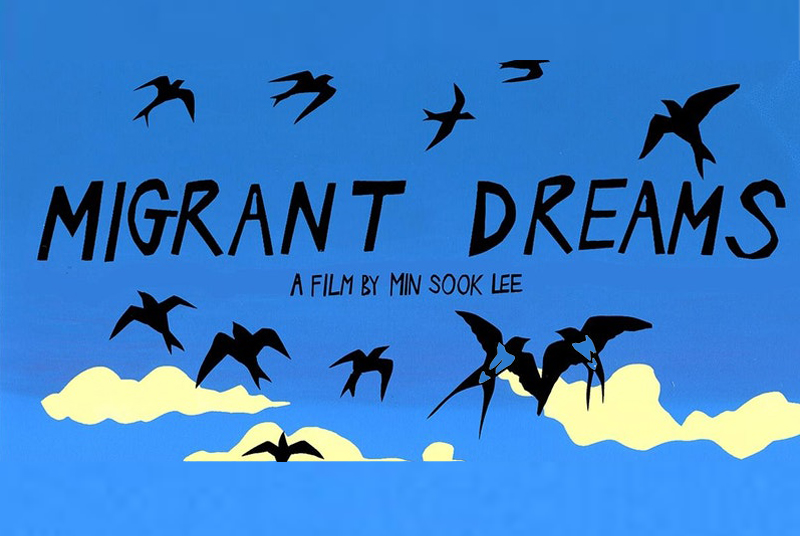
Migrant Dreams shines light on migrant workers in Canada
By Dianne Miranda, March 2 2023—
Every year, thousands of migrant workers leave their home countries to work in farms and greenhouses to supply the fruits and vegetables Canadians enjoy. Most, if not all of them, have the hope and dreams of earning money to send back to their families. This is made possible through the Seasonal Agricultural Workers Program (SAWP) where low-skilled migrants work up to twelve hours a day, six to seven days a week, and are sent to municipalities and cities like Leamington, Ontario where the Migrant Dreams is set.
Migrant Dreams is presented in conjunction for Perspective Film Series and with the exhibit Human Capital in Contemporary Calgary. Curated by Tak Pham, Human Capital invites the audience to question how institutions and their policies promote a Canadian identity, yet the same policies maintain the treatment of humans as capitals. They sustain the perceived celebrated diversity of immigrants, but by prioritizing economic prosperity, these communities are continually marginalized. Human Capital runs until April 16 and it is presented in partnership with the MacKenzie Art Gallery.
Migrant Dreams tells of the untold stories of several migrant workers who face struggles under Canada’s Temporary Foreign Worker Program (TFWP) and exposes the systemic exploitation of these workers and the deplorable working and living conditions they have to endure. The film provides an intersectional lens into the distant dreams of many immigrants for a possible life in Canada, and the opportunity to work in a foreign country often for the betterment of their families’ lives back in their home countries. These migrant dreams do not often translate into realities as we see in the film. Being in Canada does not always guarantee a better life — but it does allow for a different life.
The film wonderfully explores the idea of Canada being a land of opportunity and a mosaic built upon celebrated diversity, yet when we look deeper into our own backyard’s policies, we realize that temporary low-wage workers are vulnerable to abuse by their employers. It prompts the audience to question the very conditions we condemn as a nation yet we see these conditions to be the reality for some workers in Canada. Because of TFWP’s policies, workers have limited labour market mobility and have no support and access to work information such as contracts in their own languages. Employers and recruiters, as seen in the film, use levels of deception, intimidation and the fear of termination as a deterrence factor for workers telling of their lived experiences and reporting the unethical practices of employers.
Statements such as “immigrants are taking jobs from Canadians” or “immigrants abuse the welfare state” and attitudes like the Not In My Backyard (NIMBY) movement become especially problematic when we explore films like Migrant Dreams.
The audience is able to internalize the “me-versus-them” mentality, the opposite and mutually exclusive dichotomy portrayed within the film, yet the realization that we are more closely connected is not easily established. These workers pack and harvest the fruits and vegetables that we eat in our very homes.
Despite these heavy realities portrayed in the film, Migrant Dreams is also hopeful and shines on the perseverance, persistence and courage of these migrant workers, as one could describe as simply being human. The film highlights how in the face of multiple threats from employers and recruiters, they were not helpless victims but rather active actors in the resistance and fight to challenge the visible extortion they were facing. One of the striking scenes of the film was when Nanik, one of the TWFP migrants from Indonesia Lee follows in the documentary, was asked if she was scared, she answered with a huge grin on her face that she was terrified.
The importance of speaking out and using one’s voice as a source of power is greatly highlighted as we see organizations such as the Justice for Migrant Workers, (J4MW) and the actions and passion of local community activists, like Cathy who throughout the film have been the support system for many of the migrant workers. However, the film also explores the intersection where one would have to decide between the ability to earn money or to advocate for one’s rights and freedoms being a contract worker.
In addition, Migrant Dreams touch the hearts of the audience, especially those who are first generation immigrants and have experienced similar things, with the scenes of the migrant mothers regularly connecting with their children back home through cell phone video calls and their constant reminder that these hardships are for a better future. This heavy cloud of instability, uncertainty, anxiety and doubt of the day they would be together again hovers over each call.
Migrant Dreams also illustrate these workers are more than just workers, they are people with dreams and aspirations, however distant they may be because of their circumstances. During arguably the happiest moment of the film, the audience witnesses the union of Dwipa, a transgender man and Rhami, who are from two different religions and cultures. This portrays how being in Canada was a way to make a dream come true as homophobia and religious intolerance in Indonesia is inevitable for those like Dwipa and Rhami. Their marriage also speaks to the overarching themes of the film that is resistance and finding and building community and family among those around us; their love is a radical act.
Min Sook Lee’s film making and writing fill the audience’s heart with hope and urge to seek truth within our own homes and challenge ideas such as the celebrated images of Canada being a multicultural country. Migrant Dreams calls upon everyone to continuously help build and create a nation of an inclusive society where every member is valued.
